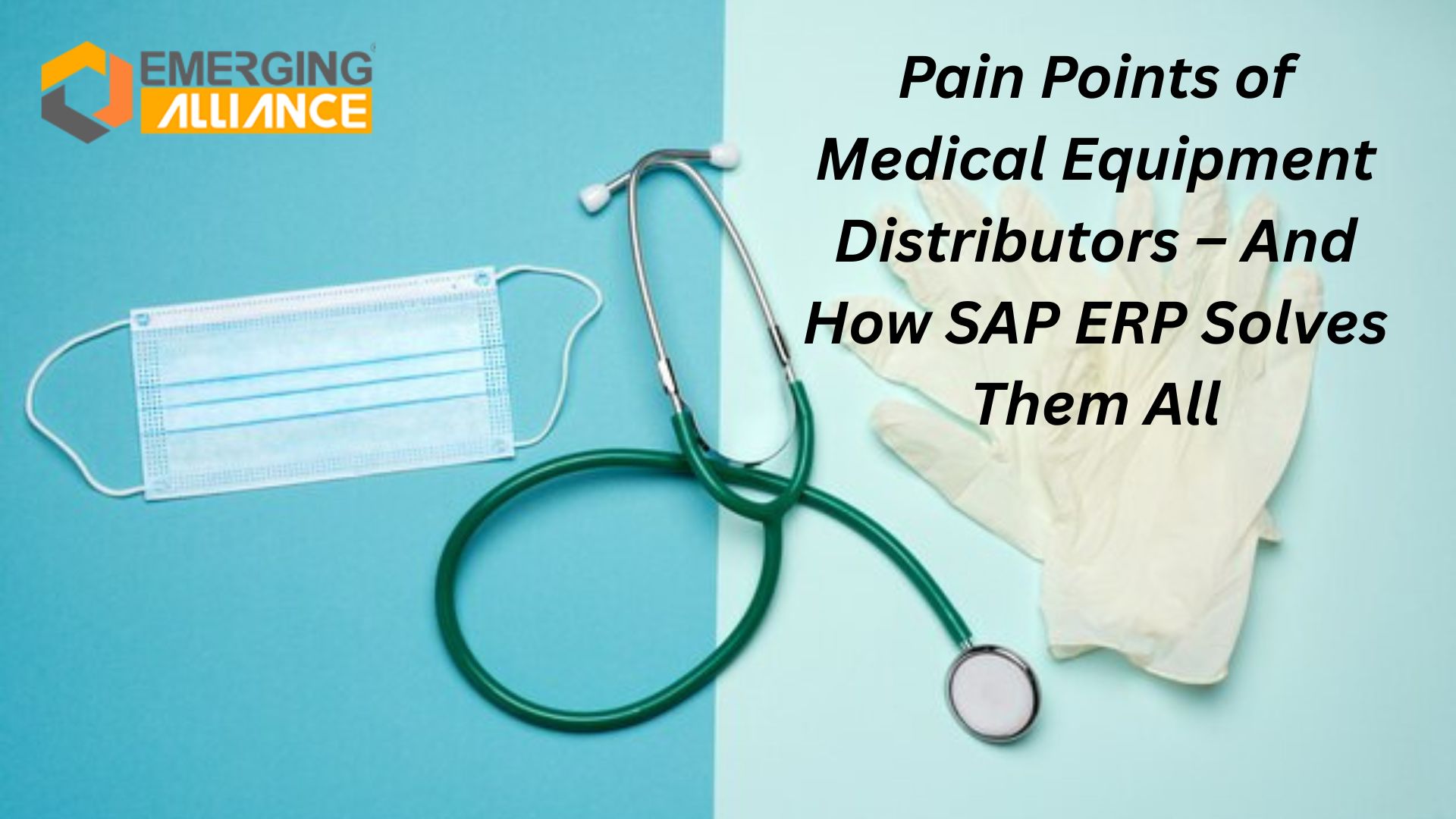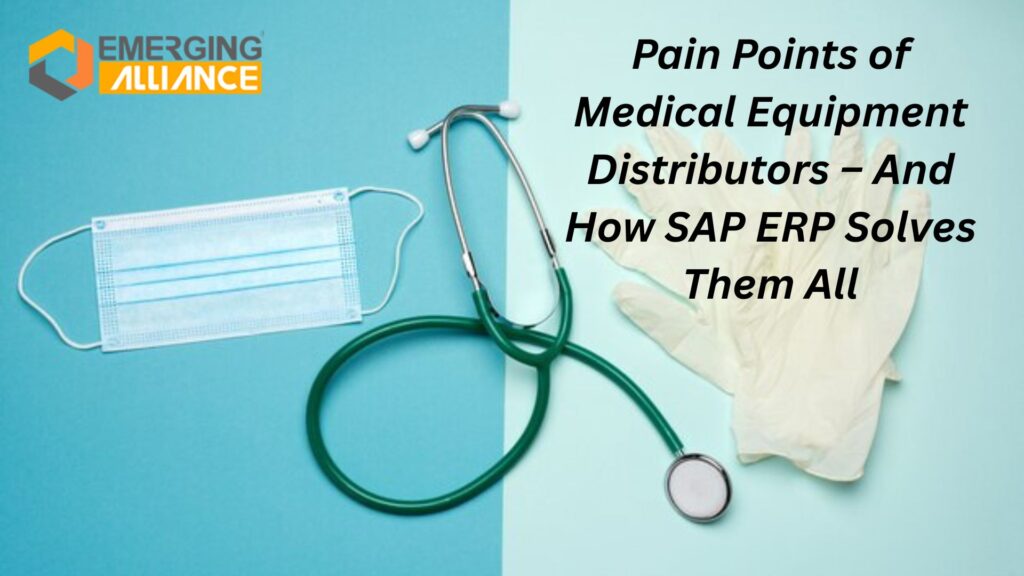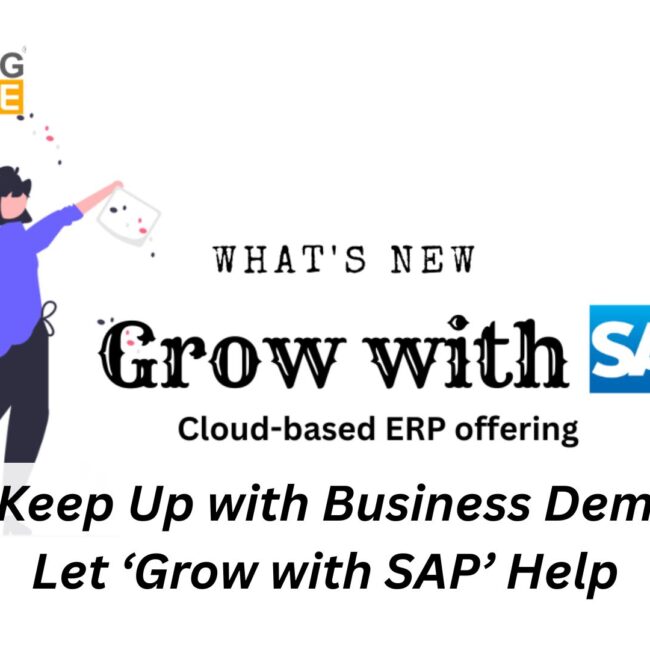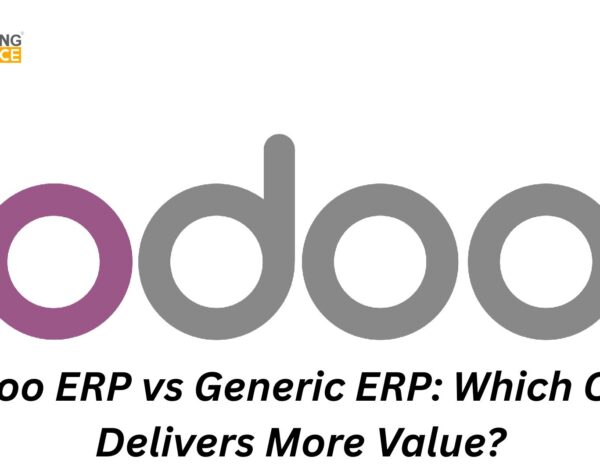
5 Pain Points of Medical Equipment Distributors – And How SAP Solves Them All

Master Medical Equipment Distribution with SAP ERP Solutions
The medical equipment trading and distribution industry plays a vital role in maintaining the efficiency and effectiveness of the healthcare sector. From hospitals and clinics to diagnostic labs, timely access to reliable medical equipment is non-negotiable. However, medical equipment distributors face significant operational challenges—from maintaining regulatory compliance and managing complex inventory to battling cost pressures and order delays.
To overcome these hurdles, leading companies are turning to SAP ERP and SAP Business One—powerful tools that streamline operations, enhance visibility, and boost profitability.
Top Challenges in Medical Equipment Distribution—and How SAP ERP Solves Them
1. Regulatory Compliance & Product Traceability
Medical equipment distributors must comply with stringent regulations like FDA, CE Marking, ISO 13485, and UDI. Failure to do so can lead to costly penalties, product recalls, and loss of reputation.
How SAP ERP Helps:
- End-to-End Traceability: Tracks every batch and serial number across the supply chain.
- Automated Regulatory Reporting: Ensures seamless audit readiness and documentation.
- UDI Compliance: Generates regulatory-compliant labels and barcodes automatically.
2. Complex Inventory & Expiry Management
Managing a mix of high-value equipment and short-life consumables is tricky. The risk of overstocking, stockouts, or expired inventory is high—impacting both finances and patient care.
How SAP Business One Helps:
- Real-Time Inventory Visibility: Monitor stock levels across multiple locations.
- FEFO (First Expiry, First Out): Prioritize usage of items nearing expiry.
- AI-Based Demand Forecasting: Predict future demand with precision.
- RFID/Barcode Integration: Automate stock movement and reduce errors.
3. Inefficient Order Fulfillment & Logistics
Manual order processing, disconnected logistics, and lack of shipment tracking lead to delays and customer dissatisfaction.
SAP ERP Solutions:
- Automated Order-to-Cash Cycle: Accelerates order processing by up to 50%.
- Integrated Logistics & Real-Time Tracking: Connects with 3PL partners and GPS systems.
- Optimized Delivery Scheduling: AI-driven route planning for timely deliveries.
4. Lack of Data-Driven Decision-Making
Disconnected legacy systems result in inaccurate stock planning, poor financial visibility, and limited insights into customer behavior.
SAP ERP Benefits:
- Real-Time Dashboards: Monitor inventory, sales, and financials live.
- Automated Financial Reporting: Track profits, costs, and performance effortlessly.
- Customer & Sales Forecasting: Use AI to anticipate market trends.
5. Cost Pressures & Margin Erosion
Increasing competition and rising costs squeeze profit margins. Without automation, operational costs soar and pricing strategies fall flat.
How SAP Business One Tackles It:
- Procurement Automation: Streamline vendor management and secure better deals.
- Dynamic Pricing Models: Adjust pricing based on demand and customer history.
- Operational Cost Savings: Automation cuts admin costs by up to 30%.
Success Story: SAP ERP in Action
A major Middle Eastern medical equipment distributor faced:
- Frequent stock shortages and expired product losses
- Long order processing times
- Risk of regulatory non-compliance
The SAP Business One Implementation Delivered:
- ✅ 30% faster order fulfillment
- ✅ 50% fewer compliance penalties
- ✅ 20% improvement in profit margins
Why SAP ERP is Essential for Medical Equipment Distributors
The stakes are high in medical equipment distribution—inefficiencies can impact lives. By implementing SAP ERP or SAP Business One, companies can:
- ✅ Ensure full regulatory compliance and traceability
- ✅ Manage inventory smartly to reduce waste
- ✅ Automate order and logistics workflows
- ✅ Make better decisions with real-time insights
- ✅ Lower costs and protect profit margins
❓ Frequently Asked Questions (FAQs)
1. What are the main challenges faced by medical equipment distributors?
Medical equipment distributors often struggle with regulatory compliance, inventory expiry, order delays, high operational costs, and lack of real-time data for decision-making.
2. How does SAP ERP help with regulatory compliance in medical distribution?
SAP ERP ensures end-to-end product traceability, automates regulatory reporting, manages UDI labels, and keeps distributors audit-ready at all times.
3. Can SAP Business One manage inventory for medical equipment and consumables?
Yes, SAP Business One offers real-time inventory tracking, expiry management, and AI-based demand forecasting to prevent stockouts and reduce wastage.
4. How does SAP ERP improve order fulfillment for distributors?
It automates sales order processing, integrates with logistics providers, optimizes delivery routes, and tracks shipments in real time for faster deliveries.
5. Will SAP ERP help improve profitability for my distribution business?
Absolutely. SAP ERP reduces manual tasks, improves cost control, automates pricing strategies, and increases efficiency—leading to higher profit margins.
Ready to future-proof your medical equipment distribution business? Contact us at https://emerging-alliance.net/ today and discover how SAP ERP can revolutionize your operations!






